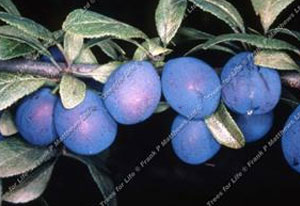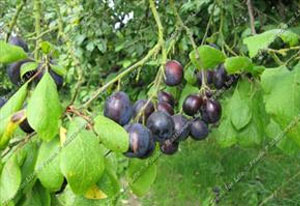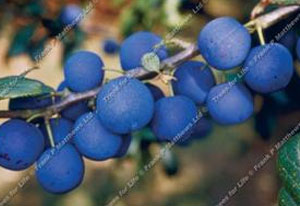
Damson – Farleigh
Very small with a blue-black bloom. Good quality. Known to be very hardy and most likely to crop regularly in northern districts. (Farleigh, Kent 1820)

Damson – Merryweather
An unusually large plum sized damson both for dessert and culinary use. Reliable heavy crops. Self fertile. (Nottingham 1907)

Damson – Shropshire Prune
The ‘Greengage of Damson’. Native of the West Midlands. Small hedgerow damson – very reliable with intense flavour. Similar to the ‘Westmorland’ damson. (Shropshire 17th Century)

Damson – Sweet Prune
The Classic German ‘Hauszwetsche’ sweet prune for traditional plum cake and fresh eating. Size between Shropshire Prune and Merryweather

